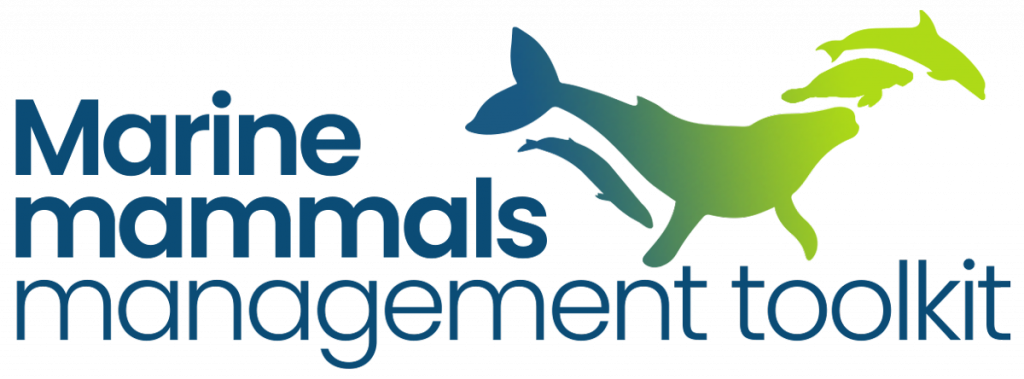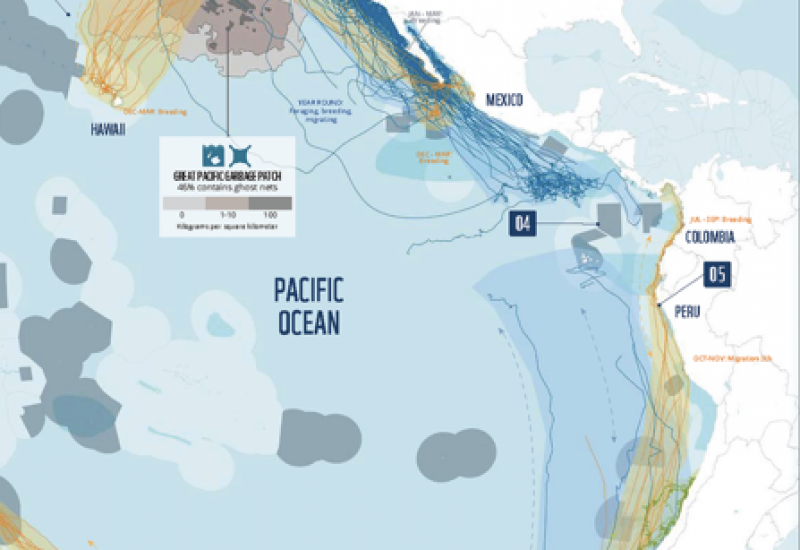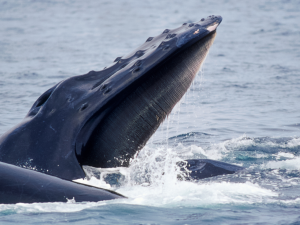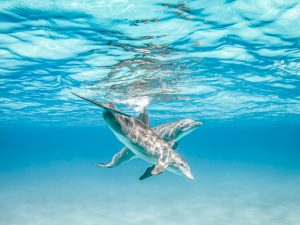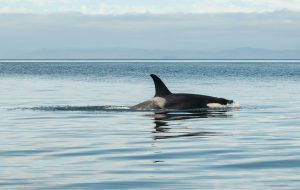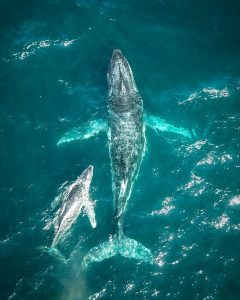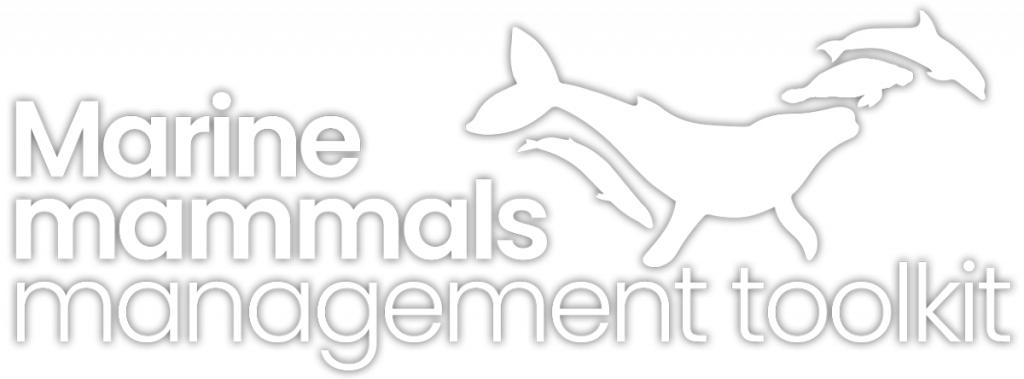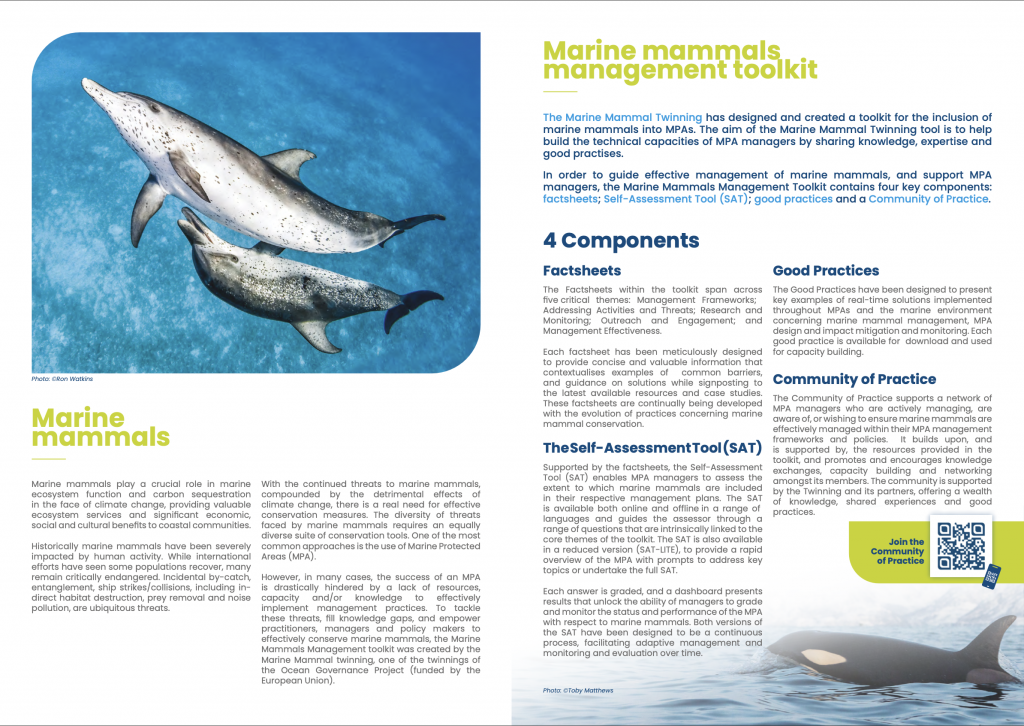WWF and the marine mammal science community is calling for renewed cooperation with the aim of protecting migrating whale populations by mitigating threats and implementing measurable change across the Eastern Pacific Ocean region. WWF and their partners have identified actions for governments, industry, and individuals to safeguard migratory routes in the region by 2030.
The report, titled Blue Corridors of the Eastern Pacific Ocean, Opportunities and Actions to Protect Migratory Whales, includes a map highlighting whale migration routes along the Eastern Pacific Ocean, ranging from Antarctica to the North Pole (fig. 1). These blue corridors are essentially whale ‘superhighways’, which is why these transient species can be found anywhere from the icy waters of the Arctic to the tropical seas of the Pacific. For great whales (defined as being longer than 10m and weighing over 10 tonnes), the Eastern Pacific Ocean is a key habitat, with 12 out of 14 species being found here.
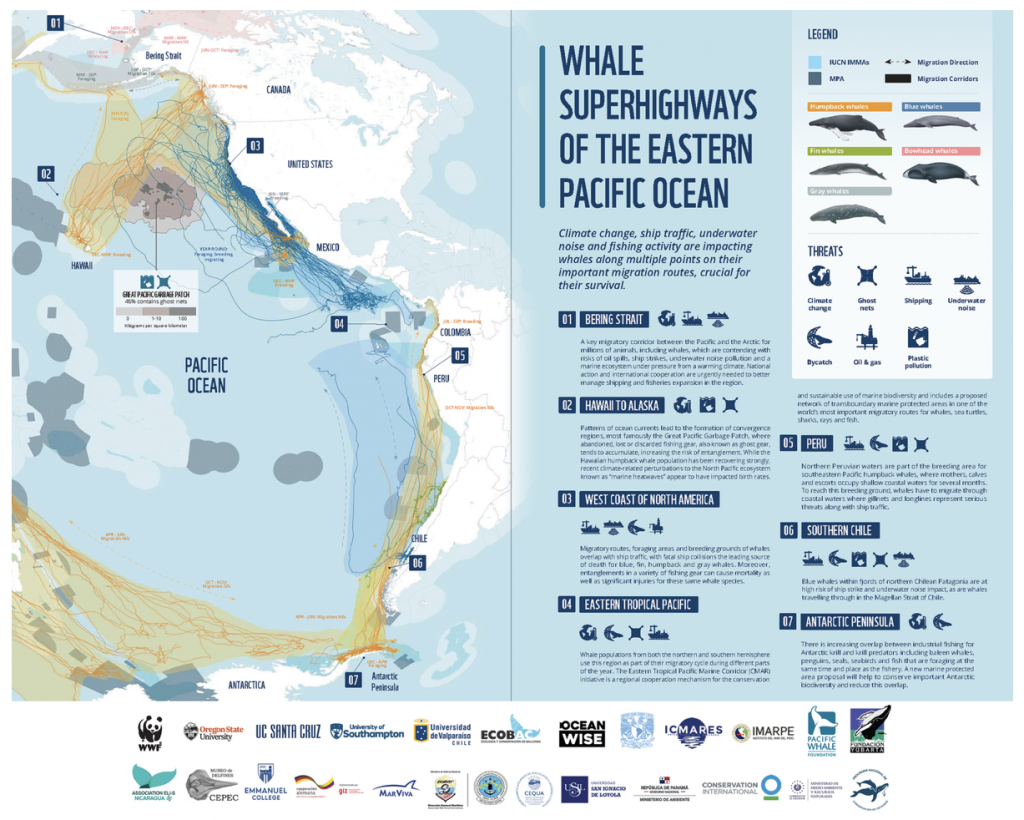
To ensure the safeguarding of whale superhighways across the Eastern Pacific by 2030, WWF is calling for governments and policy makers to support the Americas Protection of the Oceans joint declaration to implement networks of MPAs and OECMs, Other Effective Area-Bases Conservation Measures, with the goal of protecting 30% of the ocean by 2030. To learn more about the joint declaration, follow this link.
The report outlines a range of actions, including:
- Working to achieve zero whale entanglement in fisheries
- Reducing plastic and other pollution
- Rerouting shipping lanes away from critical whale habitats
Supporting existing actions such as the UN Plastics Treaty & Ghost Gear Initiative are one of many ways that individuals and organisations can make a difference for whales and their habitats.
To successfully protect whales at the scale required for the Eastern Pacific Ocean, a holistic approach is required that engages a wide range of stakeholders from international and regional organisations such as the International Whaling Commission (IWC), the International Maritime Organisation (IMO), and the Permanent Commission of the South Pacific (CPPS), to academic institutions such as the Marine Mammal Institute at Oregon State University.
Even though implementing networks of MPAs is a proven conservation tool, only 8.6% of the world’s ocean have actively managed MPAs. Chris Johnson, Global Lead for whale and dolphin conservation at WWF, says the evidence shows oceans need thriving whale populations to enhance marine productivity, and that they play a crucial role in carbon capture. Supported by scientific research, whales are now showing us how we can connect networks of MPAs to achieve the 30×30 targets.
